Beyond the Frame 54/
I’ve taken a deep dive into the controversy currently unravelling around one of the most famous photographs of the 20th Century: Napalm Girl.
Napalm Girl – Beyond the Frame
To view the full content, including video footage, I recommend viewing this edition in a desktop browser. WARNING: some content may be upsetting.
In any list of the most famous and iconic photographic images of the 20th century, Napalm Girl will be at or very near the top. Alongside Afghan Girl, Raising the flag on Iwo Jima, Tank Man, and Migrant Mother, the Napalm Girl photograph lives deep in our collective memory.
Each of these images illustrate a part of our history but such is their enduring power that they have, in themselves, become history.
Each photograph has, to varying degrees, been the subject of controversy and debate. Today, 53 years after it was made, the Napalm Girl photo is the centre of a new controversy which has polarised opinion and generated almost as many column inches as it did when the photo was first published in 1972.
This is a true story worthy of a six-part Netflix special or a long-running podcast series. I have condensed a huge amount of information, multiple reports, and a hefty weight of analysis as far as possible whilst trying to keep sight of the important elements. This, at the time of writing, is the story of Napalm Girl or, to give the image its official title, The Terror of War.
The Facts
The facts as they are agreed upon today are not the same as they were 12 months ago. This is what we know to be true at the time of writing.
On the 8th of June 1972, journalists outside the Vietnamese village of Trang Bang watched as two South Vietnamese A1 Skyraider planes mistakenly dropped explosives and napalm on their own troops.
21-year-old Nick Ut, a staff photographer with Associated Press (AP), was one of several photographers on the scene. Also present were Nguyen Nghe a Vietnamese driver for NBC and occasional ‘stringer’ for AP, and Huynh Phuc, a military photographer.
Nick Ut photographed the explosions hitting the village. Fellow journalists can be seen standing on Highway 1.
Two minutes later, children running from the village appeared in a cemetery to the north of Highway 1.
One of these children was nine-year-old Kim Phuc. She had torn the burning clothes from her body and was shouting “Nóng quá, nóng quá” (So hot, so hot).
Kim had sustained third-degree burns. Two of her cousins were killed in the bombing.
As Kim and other survivors ran from the burning village, TV crews filmed and photographers made still images.
At that point, these two photographs were made. They are the only two surviving frames from that roll of film. On the left, the now famous Napalm Girl photo.
Nick and others doused Kim’s burns with water. This ITN footage shows reporter Christopher Wain giving water to Kim.
Nick has said, and as far as I know it is undisputed, that he stopped photographing in order to take Kim and several other children to a hospital in Saigon. Doctors said that Kim’s burns were so severe that she was unlikely to survive.
Nick visited Kim in hospital over the next 14 months and the course of 17 operations as, despite doctors’ predictions, she slowly recovered.
Nick’s visits continued until Kim was evacuated during the fall of Saigon, three years later.
The Photograph
Here’s Nick Ut speaking about his memories of the 8th of June, 1972.
(Full interview at Flatland Art House)
Associated Press distributed the image, having credited it to Nick Ut.
(If you think I’ve chosen a slightly unusual phrasing in the previous sentence, you’d be right. Read on…)
The Napalm Girl photograph ran in newspapers around the world.
New York Times editors initially debated using the image because of the nudity but concluded that the significance of the story outweighed the need to worry about readers’ sensibilities. Editors at the UK’s Sun newspaper were apparently less hesitant.
Let me just say, with all respect, if the nudity is what concerns you most about the Napalm Girl photo, you might want to ask your nurse to up your meds.
Controversies
Napalm Girl has attracted more than its fair share of controversies in the 53 years since that friendly fire attack in Vietnam.
Nixon
Having seen the photo in newspapers, US President Richard Nixon is heard on audio tape saying, “I’m wondering if that was fixed.” Perhaps no surprise that Tricky Dicky’s instinctive reaction was to wonder if something was a lie.
Nick Ut responded to Nixon’s suspicions, “The horror of the Vietnam War recorded by me did not have to be fixed. That terrified little girl is still alive today and has become an eloquent testimony to the authenticity of that photo. That moment thirty years ago will be one Kim Phúc and I will never forget. It has ultimately changed both our lives.”
Facebook
In 2016, following an outraged response from Norwegian Facebook users, the social media platform was forced to make a u-turn after deleting the Napalm Girl photos from a newspaper’s posts.
A Facebook spokesperson said, “We recognise the history and global importance of this image in documenting a particular moment in time. Because of its status as an iconic image of historical importance, the value of permitting sharing outweighs the value of protecting the community by removal, so we have decided to reinstate the image.”
If you’re making Norwegians angry, you know you’ve done something badly wrong.
Impact and Awards
Napalm Girl is often cited as one of the harrowing images responsible for reversing public opinion about America’s involvement in the Vietnam War.
“When there are photographs, a war becomes ‘real.’ Thus, the protest against the Vietnam War was mobilised by images.”
– Susan Sontag
Nick Ut and the Napalm Girl photo have won acclaim and been recognised with several awards.
Pulitzer Prize
Nick Ut won the Pulitzer Prize in 1973 “for his photograph, ‘The Terror of War,’ depicting children in flight from a Napalm bombing.”
World Press Photo
Napalm Girl was awarded World Press Photo of the Year in 1973.
The summary given by World Press Photo at the time is worth reflecting upon.
“This photograph became one of the defining images of the atrocities of the Vietnam War (1955 - 1975). The depiction of full-frontal nudity was contested but editors at The Associated Press agreed that the value of the picture and the news it portrayed deemed it important to publish. Nick Ut rushed to help Phan Thi Kim Phuc and brought her and the other children to a hospital. She survived and met the photographer again after the war. They remain friends. Kim Phuc lives in Canada and is a UN goodwill ambassador.”
At the time of writing, this is the credit that appears beneath the Napalm Girl photograph on the World Press Photo website.
I strongly suspect it won’t read the same by this time tomorrow.
National Medal of Arts
In 2020 Nick Ut was awarded the National Medal of Arts in a White House ceremony.
Following the ceremony, Nick commented, “I actually met Donald Trump in Los Angeles before he was president, he loved my picture of Vietnam. He said to me: ‘Nick, your picture changed the world.’”
Pope Francis
In 2022, Nick Ut and Kim Phuc presented Pope Francis with a print of the Napalm Girl photograph.
Kim Phuc had met Pope Francis several years before in Buenos Aires.
“He looked at the picture and remembered her right away,” Nick said after the encounter. Kim said she wasn’t sure Francis would remember her, given the hundreds of people he meets every day.“But he remembered very well. He said ‘I remember you, I know you. Do you remember we met each other in Buenos Aires?’”
A new controversy
The Stringer
A new documentary film premiered at this year’s Sundance Film Festival.
The Stringer was a late addition to the festival line-up and, to date, has only been seen in public by a small audience at Sundance.
Apparently, The Stringer documentary alleges that Nick Ut is not the author of the Napalm Girl photograph. It’s suggested that the NBC driver and occasional AP stringer, Nguyen Nghe, actually made the image.
I’m taking the accusations made in The Stringer in good faith from various sources but I haven’t seen the film myself. Very few people have. It hasn’t, as far as I know, yet found a distributor and the producers seem reluctant to make it available even to journalists reporting on the scandal the film has stirred up. My friends at PetaPixel, for instance, who have a legitimate interest in reviewing the accusations made in the film, say, “PetaPixel has repeatedly asked for a screening of the film but has been denied.”
It’s not even possible to find a trailer for The Stringer online, which seems unusual.
Another person who has, I’m told, been refused a screening of The Stringer: Nick Ut.
The Stringer will supposedly be screened at DC/DOX’25 at the Burke Theatre in Washington DC on Sunday 15 June. The film is also on the programme at Sheffield DocFest in the UK on Thursday 19 June. If you’re in Washington or Sheffield and can attend, I’ll gladly cover the cost of your ticket in return for a review. Screenings include a Q&A session and I have a list prepared.
Ad Hominem
At this point, I’m tempted to introduce some of the people behind the documentary, which is produced/supported/financed (it’s unclear) by some members of the VII Photo Foundation.
In the interests of brevity, I’ll skip the individuals and concentrate on the implications and recent developments.
If you’re interested to learn more about the main players, Adrian Horton wrote an excellent summary after the Sundance screening.
Award winning photojournalist and all-round good egg Yunghi Kim has been keeping a record of online discussions about the controversy on her Medium page. Admittedly, she comes largely from a pro Nick Ut perspective but she provides a worthwhile insight into events.
Associated Press Investigations
The AP have conducted thorough investigations into the claims apparently made in The Stringer, including analysis of negatives and of the Leica M2 camera Nick Ut has always said he used to make the image.
Report 1 – January 2025
Having been made aware that The Stringer was in production and that it would suggest Nick Ut was not the photographer of Napalm Girl, The AP launched an investigation and published the findings in January 2025.
At this point, it’s worth noting, the producers of The Stringer had even refused AP a screening of the film unless they signed an NDA, which AP declined.
Without knowing the specific accusations made in The Stringer, the AP report appears, nonetheless, to be comprehensive.
“The review shows that [Nick] Ut was on the road outside Trang Bang that day carrying four cameras, that he was moving around relentlessly shooting high-quality news photos of the village, soldiers, the moment of the napalm bombing and of civilian victims running away, and that he was in the vicinity of where Kim Phuc and other children and adults emerged from the devastating scene.
His photos showed he was on every part of the road, close to the village and back at the bridge where journalists originally assembled.”
Report 2 – May 2025
At some point after January, The Stringer documentary was finally made available to AP, which has followed up with a detailed 96-page report.
The accompanying visual analysis is extraordinary.
Despite being an investigation into an event that took place 53 years ago, the images and video clips transport us to Highway 1 outside Trang Bang village on the morning of Thursday the 8th of June, 1972.
AP’s visual analysis shows the positions of various journalists as the napalm exploded. We see Kim Phuc running through the graveyard with surviving South Vietnamese soldiers. Satellite imagery displays locations and the path taken by the fleeing children.
However, in an analogue world without time codes on footage, placing events on a timeline requires triangulating fixed points of reference in relation to moving people.
In this example, Nick Ut can be identified as the blurry figure in the background of TV footage because it can be accurately cross-referenced with Nick’s photo showing the film crew.
Even with all the available images and news footage, there are, inevitably, many gaps.
Crucially, there’s no footage of any photographer making the famous Napalm Girl frame of Kim Phuc.
The Camera
Nick Ut has always said that the Napalm Girl photo was made on his Leica M2.
Nick’s been a lifelong Leica user, working with a succession of Leica cameras until his retirement in 2017.
Nick is in Leica’s Hall of Fame and given his loyalty might deserve that accolade with or without Napalm Girl.
One hopes so because after gaining access to Nick’s Leica M2 and running some film through it, AP concluded that the famous Napalm Girl photo was probably not made with a Leica camera.
“Analysing distinct characteristics, as well as film-gate dimensions from a dozen cameras, led AP to believe it unlikely that the photo was taken with a Leica. AP also concluded it was likely, but not certain, the photo was taken with a Pentax camera.”
– From the Associate Press Visual Analysis
Further analysis of Nick’s negatives showed that some did have the characteristics of being made with a Pentax camera. Nick had inherited two Pentax cameras from his brother and it’s possible that he had one with him on the 8th of June 1972.
AP’s analysis raises more questions than it answers and leads to a frustratingly uncertain conclusion.
AP’s Report Conclusion
AP worked on their analysis for a year. It’s fair to say that it’s as comprehensive as any report could be. And they have been admirably transparent with the evidence and with their findings.
Their final conclusion, having considered all the evidence, leaves Nick Ut as the author of the famous Napalm Girl photograph.
“Following a nearly year-long investigation, the AP has concluded that there is not the definitive evidence required by AP’s standards to change the credit of the 53-year-old photograph.”
– from the AP Report: Investigating claims around ‘The Terror of War’ photograph.
World Press Photo
If you thought that was the end to this story, I fear it’s just the end of the beginning.
A few hours ago, as I began to write this edition, an email from the World Press Photo organisation reached my Inbox.
Friday 16 May 2025 at 10:10
Subject: World Press Photo to suspend authorship attribution for ‘The Terror of War’ photograph“A recent documentary made by The VII Foundation asserted that Nick Út is not the author of ‘The Terror of War’ photo. This prompted deep reflection at World Press Photo and a subsequent investigation between January and May 2025 in regards to the photo’s authorship.
In our report, we share investigative analysis that, based on analysis of location, distance, and the camera used on that day, photographers Nguyễn Thành Nghệ or Huỳnh Công Phúc may have been better positioned to take the photograph, rather than Nick Út. Therefore, we have suspended the attribution of ‘The Terror of War’ to Nick Út, from today.”
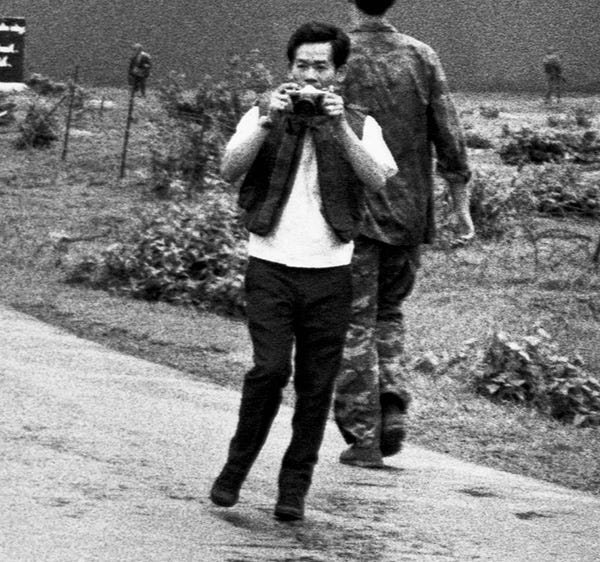
A link to an article by WPP’s Executive Director Joumana El Zein Khoury is included in the email.
And so, in an instant, Nick Ut’s right to be identified as the photographer who made one of the most impactful photographs in the last 100 years is taken from him.
Is that right or wrong? Who can say for sure? Only the real photographer can truly know.
More questions than answers
There are so many unanswered questions – and they will most likely remain so.
When we look at the grainy footage from that day, our view is hindered by the mists of a 53 year gap.
Was Napalm Girl made with a Leica? AP say that’s unlikely.
Was Nick Ut carrying other cameras on that day? He was definitely carrying at least three and he owned Pentax cameras as well as two Leicas.
If somebody other than Nick Ut made the photo, why have they never spoken out and claimed ownership? That’s hard to understand.
The allegation that Nick Ut did not make the photo originated from Carl Robinson, an AP photo editor in Saigon at the time. Now aged 80, Robinson claims to have felt guilty at the alleged misattribution for the past 53 years. Yet in his memoir about the Vietnam War, published in 2020, he makes no mention of the disputed credit. Would that not have been an ideal opportunity to do so?
Nick Ut is equally mystified, “Why would Mr. Robinson not come forward in the many years before this? Mr. Robinson stood next to me and celebrated the Pulitzer Prize I won on the day it was announced.”
Robinson claims that his boss, the widely-respected Horst Fass made him alter the photograph’s attribution. Horst Fass died in January 2024.
Why have the makers of The Stringer documentary been so reluctant to share the evidence for their claims?
It’s been widely reported that the filmmakers insisted that interviewees sign non-disclosure agreements before appearing in the documentary. Why?
At best, their approach has harmed the film’s reputation before it’s official release – whenever that might be.
At worst, it lays the producers open to accusations of trying to monetise their documentary by fuelling controversy whilst withholding their evidence. After all, a distribution deal looks more appealing if more people are talking about your film.
And what about Nick Ut? Is it plausible that a photographer could have so boldly laid claim to a famous image for so long whilst knowing it was not his? I suppose it’s plausible but it goes against everything I believe about the integrity of photojournalists. Perhaps that’s why I’m still hoping that evidence will emerge to endorse Nick’s authorship.
What’s next?
Nick Ut has launched a defamation claim against the filmmakers. His friends have launched a Go Fund Me campaign to raise money to support the claim.
Kim Phuc has little recollection of the day her village was napalmed and cannot be expected to know who made the photo of her. But, for the record, she’s always believed Nick Ut was the photographer. She says her uncle saw Nick make the photo but in the smoky chaos of that terrible day, who can be certain of anything.
Final thoughts
It’s easy to get caught up in the intrigue and the detective work of a 53 year-old mystery.
Authorship matters. Not for ego or accolades, but because this photograph has helped define how the world remembers the Vietnam War. The truth – however complex or uncomfortable – is owed not just to the photographer, but to the girl in the frame, and to everyone whose pain this image represents.
Nick Ut and Kim Phuc have remained firm friends. She calls him “uncle”. He calls her “my daughter”.
Whatever the final chapter of this story reveals, I believe Nick and Kim have sought to turn a moment of horror into a force for good. That’s worthy of our respect.
Given a choice between a world of secrecy and non-disclosure agreements or a world where courage and resilience are respected and honoured, I’m strongly inclined towards the latter.
If you have any information that might be relevant to this story, or questions that I might be able to answer (I’ve got a lot more resources and information), please let me know in the comments or send me an email.
And if you’re able to attend a screening of the elusive documentary, The Stringer, I will genuinely pay for your ticket in return for your review.
I hope you will enjoy a sunny weekend, wherever you are. Mrs. G and I are going to the cinema to watch the latest Tom Cruise adventure. Well, Mrs. G might watch whilst eating a giant bucket of popcorn. I shall be sleeping.
Tomorrow evening we will be eating sushi and watching the Eurovision final. Yes, if there’s an antonym for “high culture”, that’s what our weekend will consist of.
Until next week, go well.
NB: I’ve used anglicised versions of Vietnamese names as that’s how they most often appear outside Vietnam. For the record, full names are:
Phan Thị Kim Phúc (Kim Phuc – The Napalm Girl in the photo)
Huỳnh Công Út (Nick Ut – photographer originally credited)
Nguyễn Thành Nghệ (Nguyen Nghe – NBC driver and AP ‘Stringer’)
Huỳnh Công Phúc (Huynh Phuc – a military photographer)
Directory: Beyond the Frame newsletter archive.
Resources: Recommended books, films, gear, media etc.
Beyond the Frame 53/
There's still time to enter the competition to win a set of Cyanometer postcards.


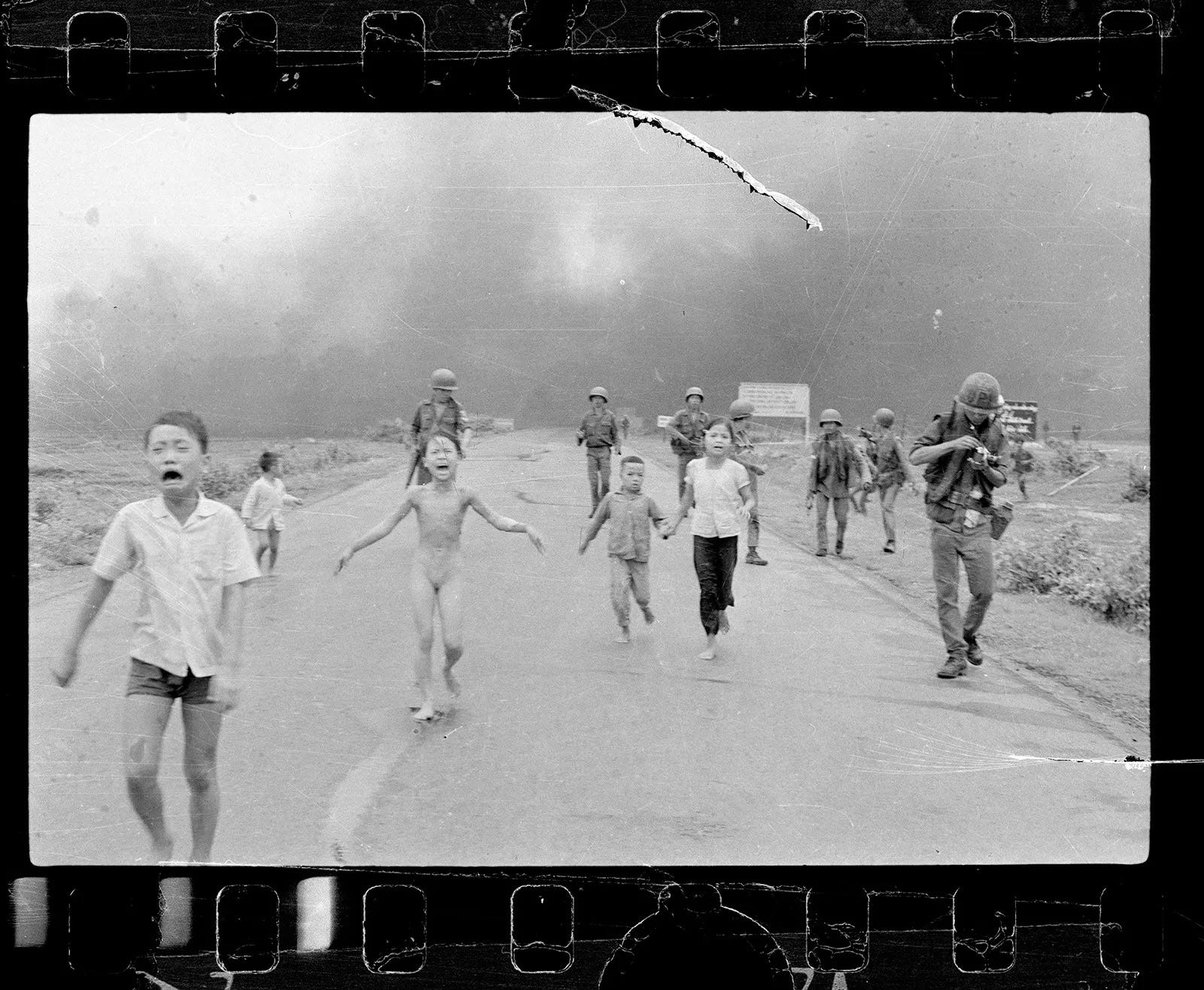

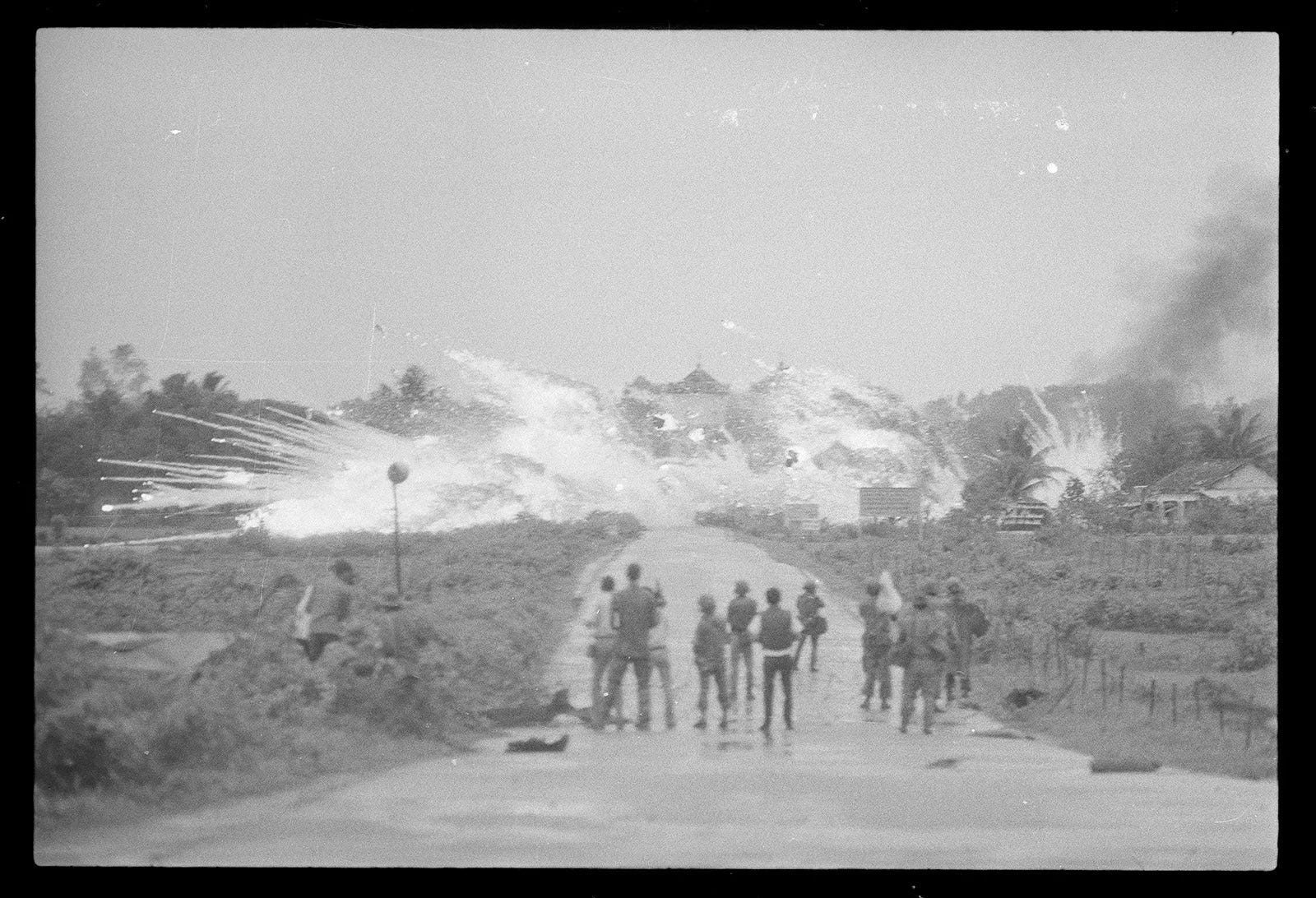
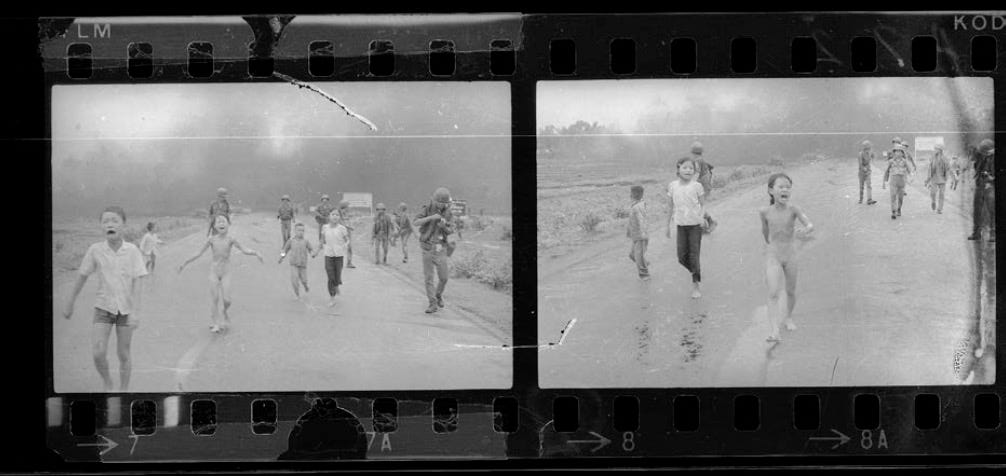
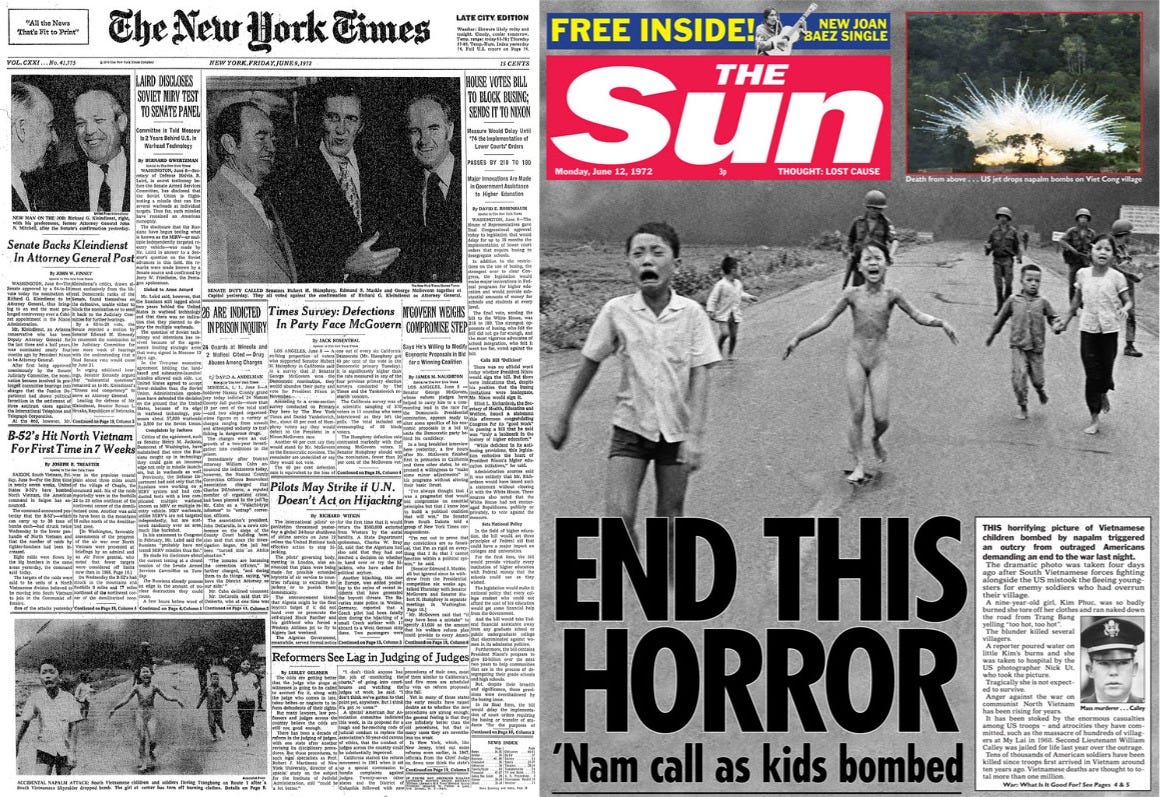

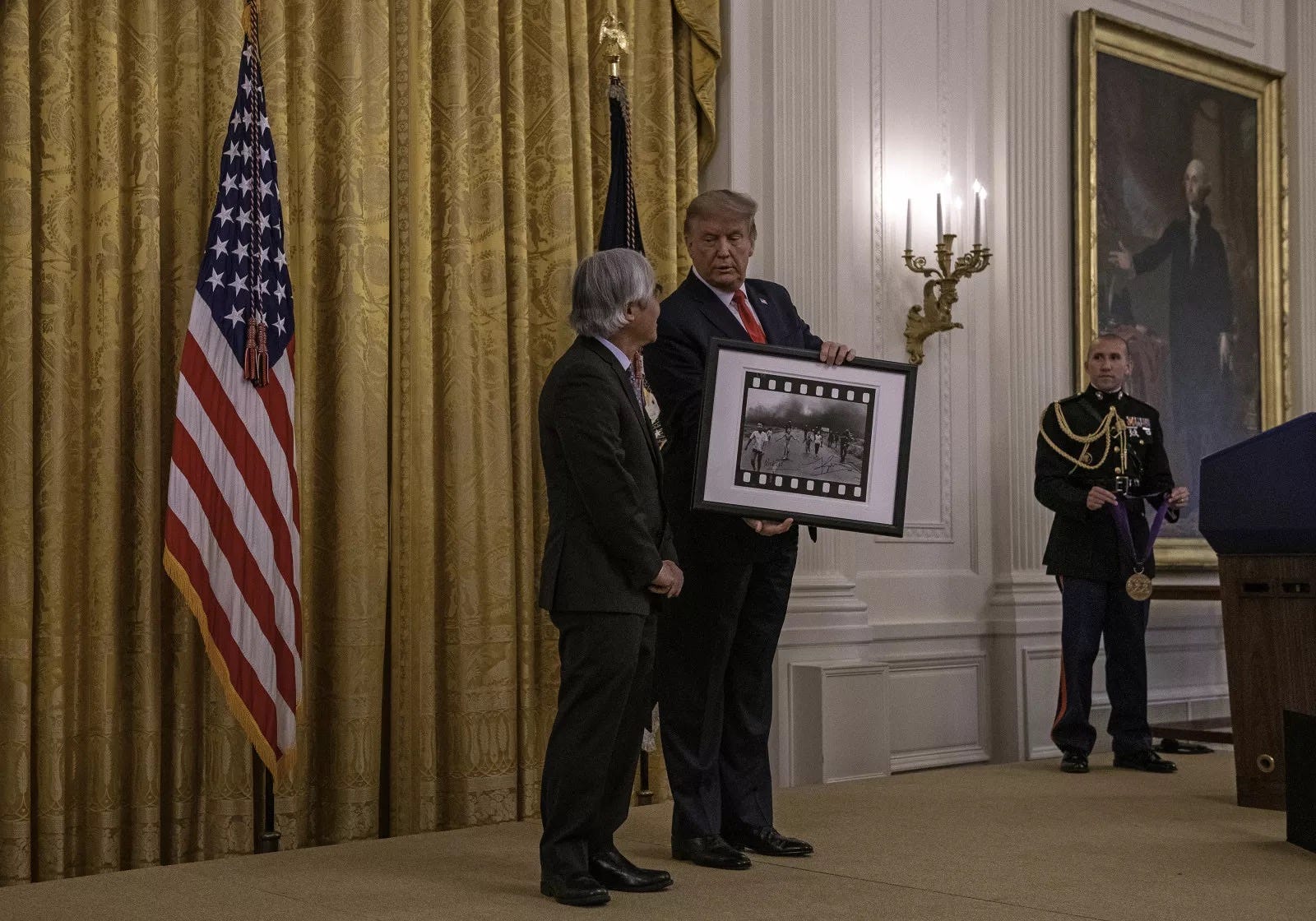
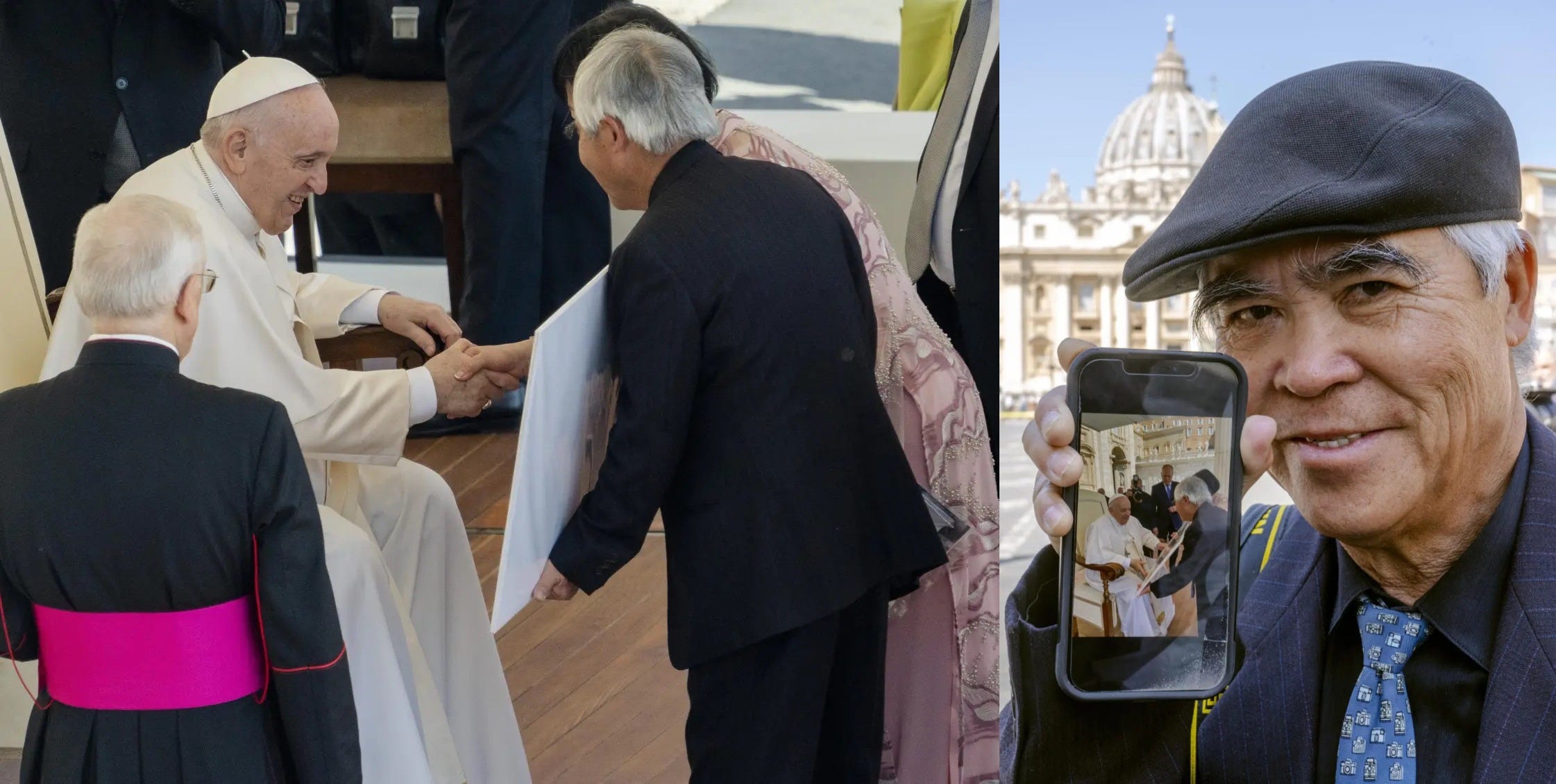
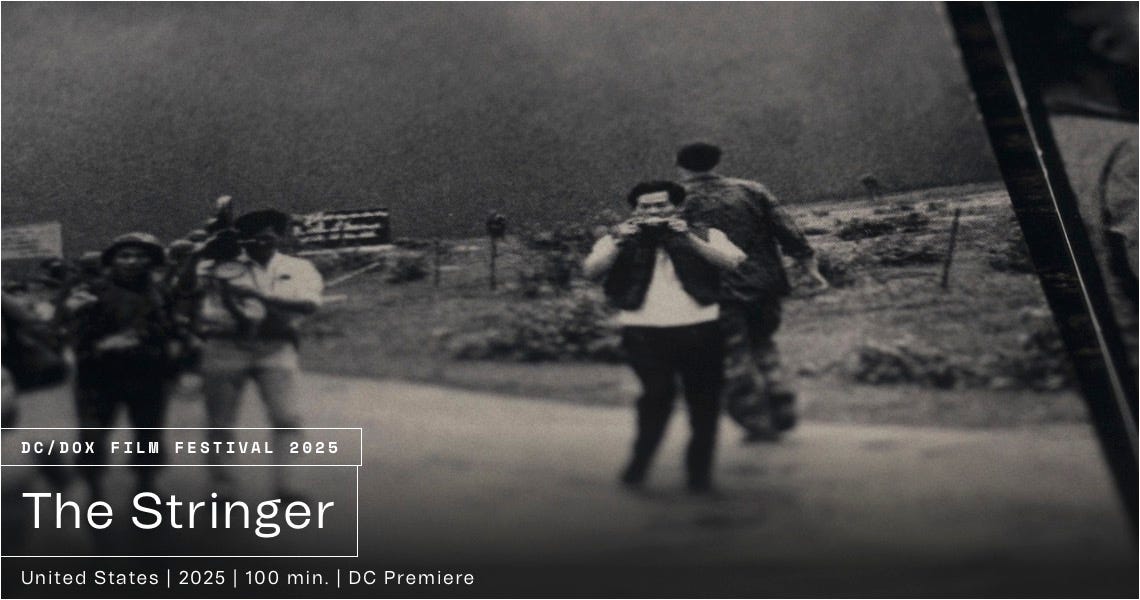
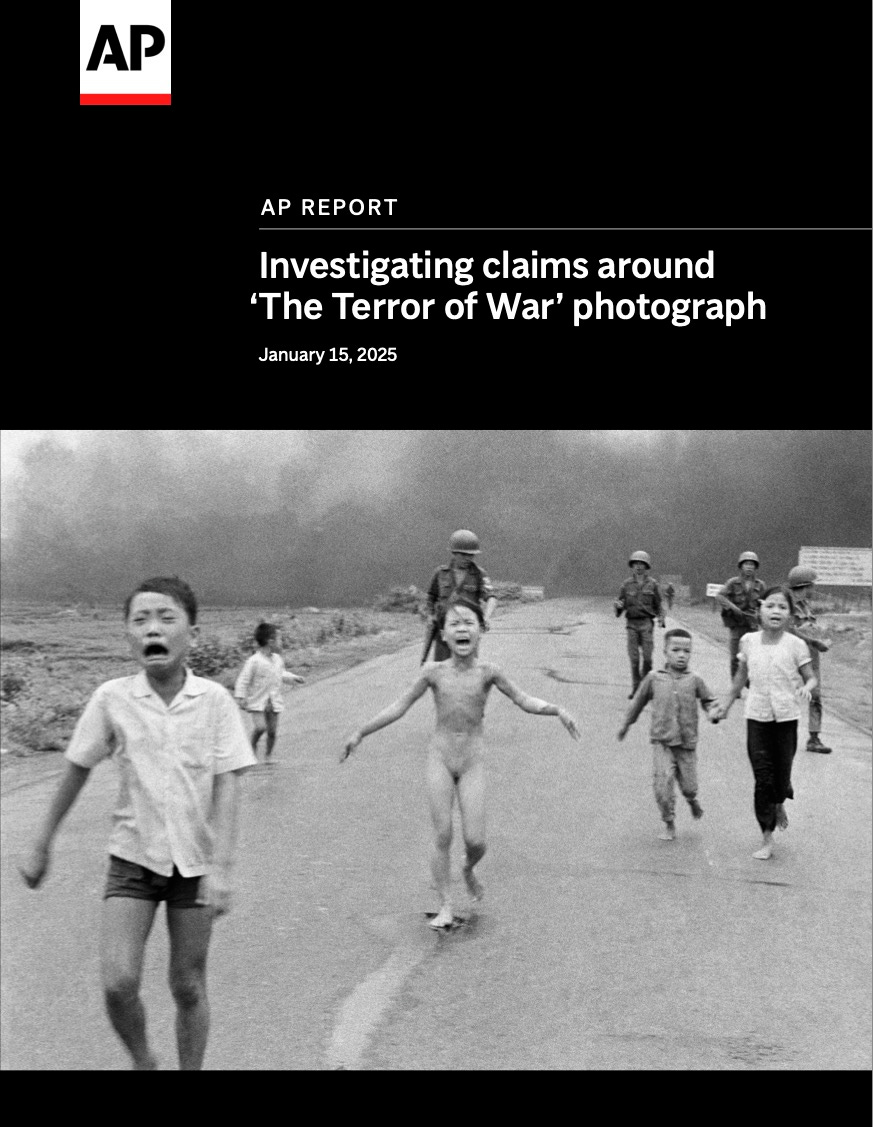
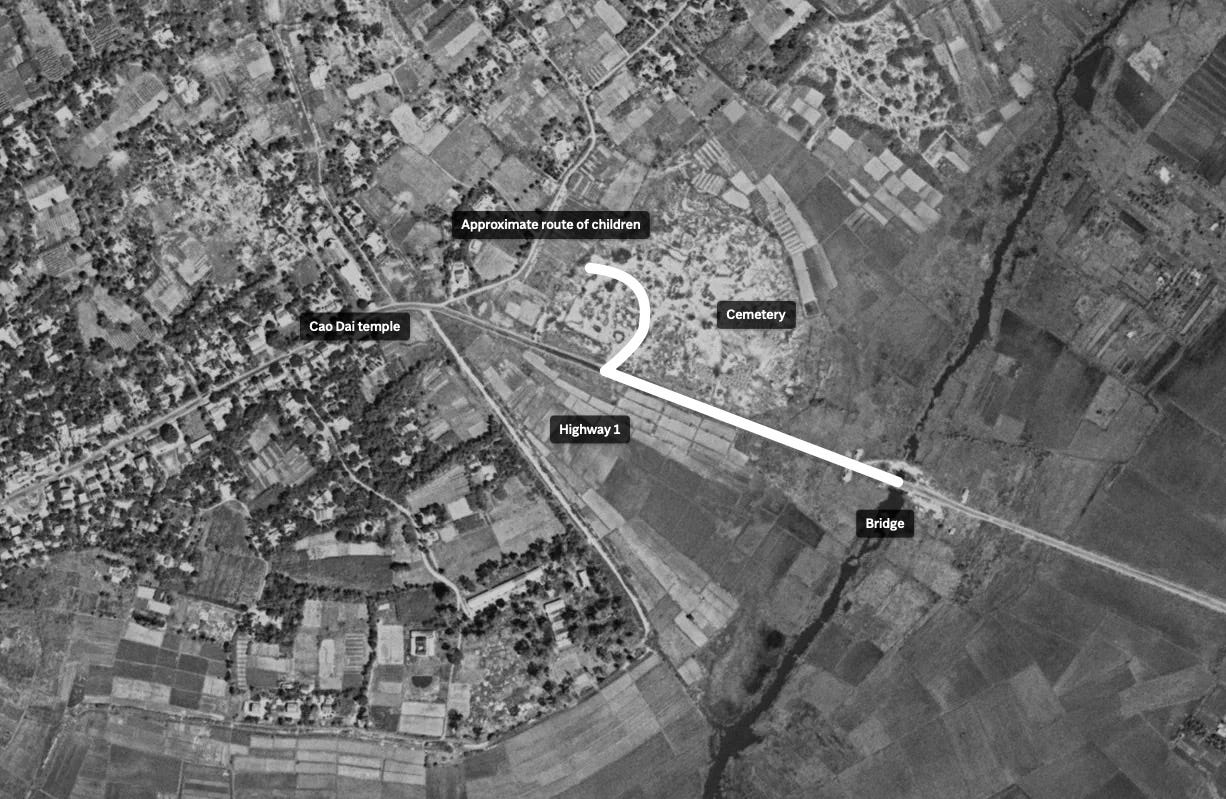
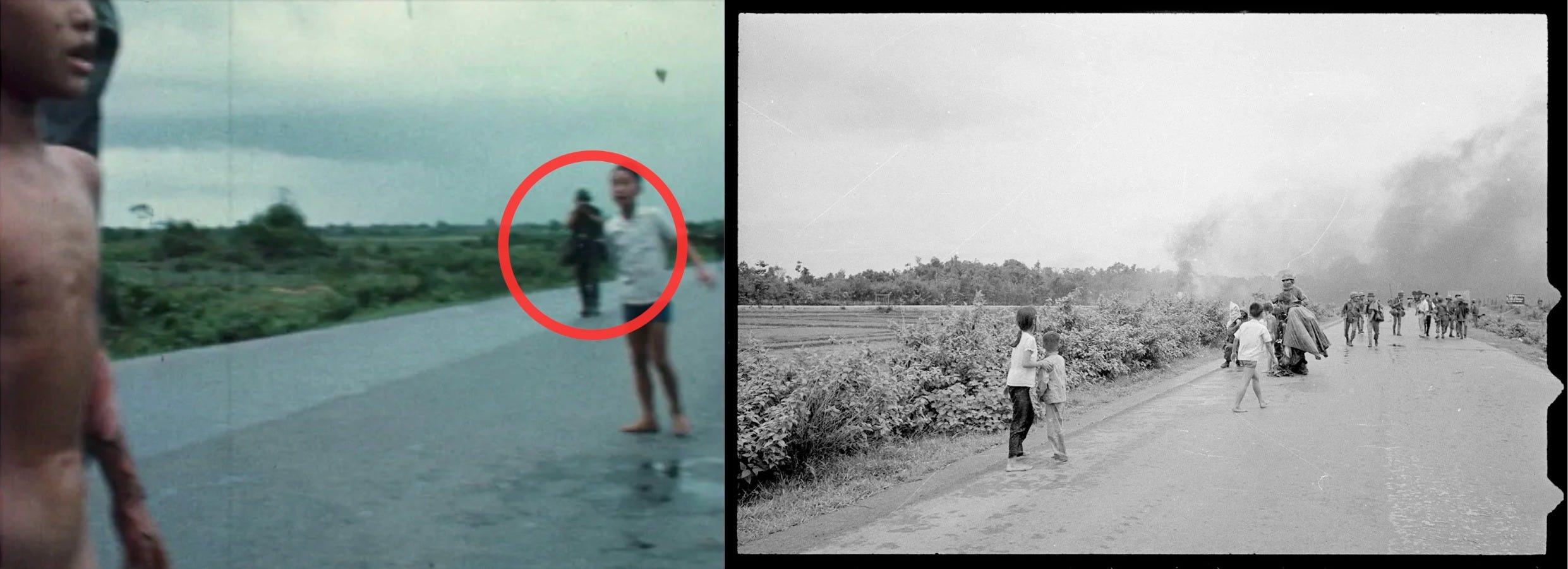



An interesting read, Gav.
I guess it's not as simple as whoever holds the original strip of film being the owner?
I was a teenager and a photography enthusiast when this image was published in 72. Your story reads as if this controversy is somehow new. It's not. I read many news stories and photography magazine articles about it back in 72 and 73, and I recall there was near immediate and public arguments over who should actually be credited with the image.
Personally I don't believe it matters much who took it, (except to the two photographers).
The image itself, is one of the most iconic of the period, and is seared in the memories of tens of millions. It's in a group with the image of John Junior saluting his father's casket, the Christmas earthrise of 1968, the Kent State image, and Bobby Kennedy's assassination.
The goal of virtually every news photographer, it's to create images which distill complex stories down to a single memorable image. Most photographers know that which image people actually remember is often decided not by skill, but by circumstance. I'm still humbled by both of these gentlemen, who bravely went in harms way day after day in order to remind us of the tragedy of war.